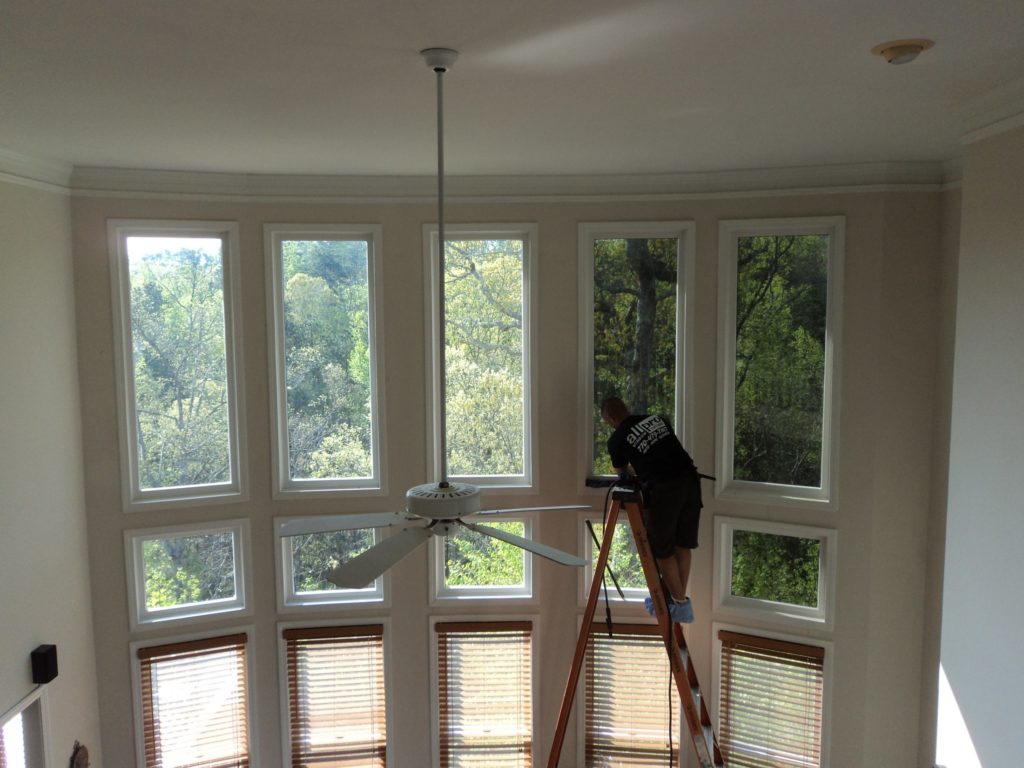Residential Window Tint: Improve Comfort and Decrease Glare Indoors
Wiki Article
Exactly How Residential Home Window Tinting Enhances Your Home's Power Performance
Residential home window tinting presents an engaging remedy for property owners seeking to boost energy efficiency within their living spaces. By using specialized films to home windows, it successfully minimizes warm transfer, consequently supporting interior temperature levels and decreasing the requirement for extreme heating or cooling.Comprehending Window Tinting
Recognizing home window tinting is necessary for house owners seeking to improve both comfort and power efficiency in their home. Residential Window Tint. Home window tinting includes the application of a slim movie to the inside or outside surface area of glass home windows. This movie can considerably regulate the quantity of sunshine and warmth that goes into a home, therefore influencing interior environment problemsThere are different types of window tinting films offered, each with distinctive homes. The effectiveness of window tinting is typically gauged by its Visible Light Transmission (VLT) percentage, which indicates exactly how much light can pass with the movie.
Benefits of Energy Efficiency
Home window tinting not just boosts appearances but also plays a substantial role in improving energy effectiveness within residential spaces. By minimizing warm transfer through home windows, tinted films create a more stable indoor climate, which can lead to substantial decreases in power consumption for cooling and heating. This power performance translates into reduced energy bills, providing property owners with significant lasting savings.
Additionally, home window tinting improves the comfort of living rooms. By lessening glow and blocking unsafe UV rays, colored windows create a more enjoyable setting, which can lead to enhanced wellness for residents. The defense versus UV rays also helps protect furnishings and flooring from fading, adding to the durability of house items.
Exactly How Tinting Functions
Tinting films run via a combination of sophisticated products and innovations made to manage the quantity of solar energy entering a home. Mainly composed of polyester, these movies typically include metal or ceramic particles that soak up and reflect warm. This dual capability permits them to dramatically minimize the penetration of ultraviolet (UV) rays and infrared radiation while permitting noticeable light to travel through.The efficiency of window tinting is gauged by its solar warm gain coefficient (SHGC), which shows just how much solar power is transmitted via the window. Lower SHGC values are more suitable as they denote better warm denial. In addition, window tints can feature a variety of shades, allowing house owners to tailor their aesthetic preferences while boosting power performance.
Additionally, these films function as an obstacle, stopping heat loss during chillier months by mirroring indoor heat back right into the living area. This thermal insulation effect enhances the air conditioning advantages obtained throughout warmer months, adding to a balanced interior climate year-round. By taking care of solar power efficiently, domestic home window tinting not only enhances comfort yet also plays an essential duty in reducing energy intake and lowering utility bills.
Picking the Right Tint

There are different types of home window films available, including colored, metalized, and ceramic. Colored movies are affordable yet might have limited longevity. Metalized movies provide far better warmth being rejected but can hinder electronic signals. Ceramic films supply outstanding warm control without endangering presence and are extremely resilient, making them a preferred selection.
Visible light transmission (VLT) is one more important variable, as it shows the amount of natural light that can travel through the tinted glass. House owners should choose a tint with a VLT that complements their lighting preferences while still giving ample glare reduction.
Furthermore, assessing the solar warmth gain coefficient (SHGC) can help figure out just how well a color can block warm from more info here sunshine. A reduced SHGC shows better warm control, inevitably improving power performance.
Installment and Maintenance Tips
Correct installation and upkeep are vital parts in optimizing the benefits of household window tinting. Professionals also use specialized devices and techniques, which find more information can improve the longevity and performance of the tint.Following setup, upkeep is crucial to extend the life of the home window movie. It is recommended to wait at least 30 days prior to cleansing the colored home windows to allow the sticky to heal totally.
Attending to these issues quickly can protect against more damages and maintain power performance. By sticking to these installation and upkeep tips, home owners can ensure their home window tinting proceeds to offer check that significant energy financial savings and convenience for years to come.
Final Thought
In final thought, residential window tinting acts as a reliable option for boosting energy effectiveness within homes. By minimizing warmth transfer and obstructing damaging UV rays, home window movies add to lower energy usage and improved interior comfort. The option of appropriate tinting materials, along with correct setup and maintenance, further makes best use of these benefits. Ultimately, window tinting stands for a lasting financial investment that not only lowers energy expenses but additionally promotes a comfortable living setting throughout the year.Home window tinting includes the application of a thin movie to the inside or outside surface of glass home windows. By minimizing warmth transfer with home windows, tinted movies produce a much more secure indoor climate, which can lead to substantial reductions in power usage for home heating and cooling.The effectiveness of home window tinting is gauged by its solar warmth gain coefficient (SHGC), which indicates just how much solar energy is transmitted through the home window. By managing solar power properly, property window tinting not only improves convenience but likewise plays a crucial role in reducing power intake and lowering utility costs.
By lowering heat transfer and blocking hazardous UV rays, window movies contribute to decrease power usage and boosted interior comfort.
Report this wiki page